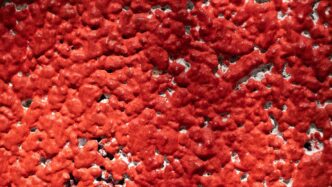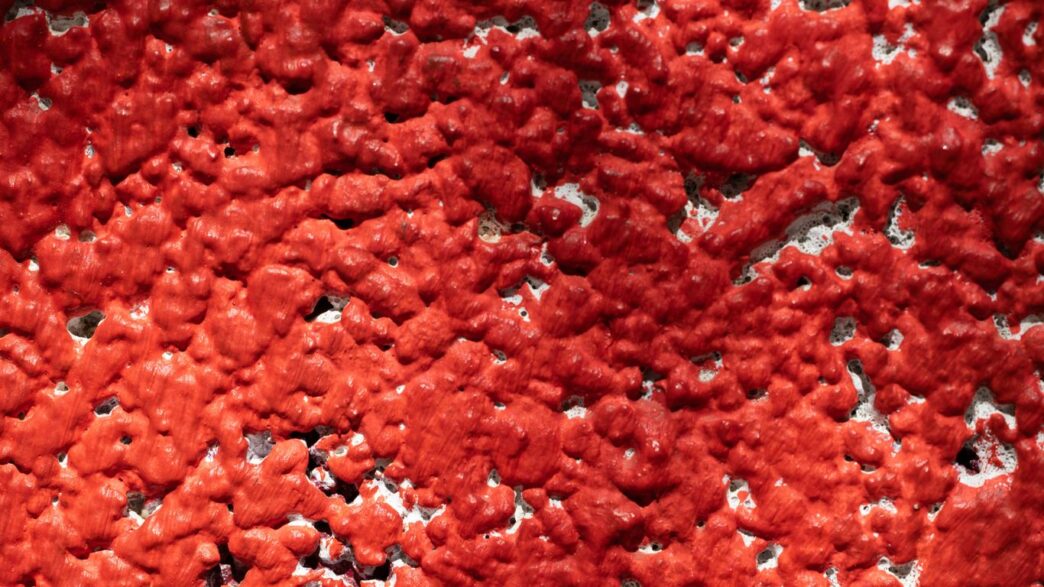Ever wonder how water moves around inside living things? It’s not just random; there’s a whole process called osmosis at play. Think of it like water taking a specific path across tiny barriers, trying to even things out. This guide is going to break down what is osmosis, why it matters, and how it affects everything from the smallest cell to whole plants and even us. We’ll look at the basics, the science behind it, and where we see osmosis popping up in everyday life and in more complex situations.
Key Takeaways
- Osmosis is the movement of water across a barrier that only lets some things through, going from an area where water is more plentiful to where it’s less plentiful.
- Solutions can be hypotonic (less stuff dissolved, water moves in), hypertonic (more stuff dissolved, water moves out), or isotonic (equal stuff, no net water movement).
- Cells react differently to these solutions: they can swell, shrink, or stay the same.
- Special proteins called aquaporins help water move faster across cell membranes.
- Understanding osmosis is important for medicine, food science, and how plants grow.
Understanding What Is Osmosis
So, what exactly is osmosis? Think of it as water’s natural tendency to move from where it’s more plentiful to where it’s less plentiful, but with a catch. This movement happens across a special kind of barrier, one that’s picky about what gets through. We call this a partially permeable membrane.
Defining Osmosis: Water Movement Across Membranes
At its core, osmosis is the net movement of water molecules. It’s not just random splashing around; there’s a direction to it. Imagine a room with a lot of people milling about on one side and very few on the other. People tend to spread out, right? Water does something similar, but it needs that partially permeable membrane to guide it. This membrane is like a bouncer at a club, letting some things (like water) pass but blocking others (like larger dissolved substances).
The Role of Concentration Gradients
This movement is all about concentration. When we talk about a "concentration gradient" in osmosis, we’re really talking about the concentration of water. Water moves from an area where its concentration is high to an area where its concentration is low. This might sound a bit backward if you’re thinking about dissolved stuff, because usually, where there’s a lot of dissolved stuff, there’s less water. So, water actually moves from an area of low solute concentration to an area of high solute concentration. It’s trying to even things out, to dilute the more concentrated side.
Here’s a simple way to think about it:
- High Water Concentration: Means low concentration of dissolved stuff (solutes).
- Low Water Concentration: Means high concentration of dissolved stuff (solutes).
- Osmosis: Water moves from high water concentration to low water concentration.
Partially Permeable Membranes Explained
These membranes are the gatekeepers of osmosis. They’re found all over in nature, most importantly in our own cells. The cell membrane, for instance, is partially permeable. It lets water and small molecules like oxygen and carbon dioxide pass through, but it stops bigger things like proteins or large sugar molecules from just drifting in or out. This selective nature is what allows cells to control their internal environment and maintain the right balance of water and solutes. Without these membranes, cells couldn’t function properly; they’d either swell up and burst or shrivel away.
The Dynamics of Water Movement

So, we know water likes to move across membranes, but what actually makes it go? It’s not just a random drift; there are specific conditions that dictate the direction and speed of this water traffic. Think of it like a busy highway – sometimes it’s a free-for-all, other times it’s bumper-to-bumper, and sometimes there are special lanes.
Hypotonic, Hypertonic, and Isotonic Solutions
This is where things get interesting. The environment outside a cell can be described in relation to the cell’s internal environment, based on the concentration of solutes (stuff dissolved in the water).
- Hypotonic: Imagine a cell sitting in a solution where there’s less stuff dissolved than inside the cell. Water, being the sociable molecule it is, will want to move from the area of high water concentration (outside) to the area of low water concentration (inside) to try and even things out. For animal cells, this can cause them to swell and potentially burst.
- Hypertonic: Now picture the opposite. The cell is in a solution with more dissolved stuff than inside. Water will rush out of the cell, trying to dilute the outside solution. This can cause cells to shrink and shrivel up.
- Isotonic: This is the chill zone. The concentration of solutes outside the cell is the same as inside. Water molecules still move back and forth, but there’s no net movement in either direction. Everything is balanced.
Cellular Responses to Different Tonicities
Cells don’t just sit there when the outside environment changes. They react!
- Animal Cells: As mentioned, they can swell and burst in hypotonic solutions (lysis) or shrink in hypertonic solutions (crenation).
- Plant Cells: Plants have a bit of an advantage with their rigid cell walls. In hypotonic solutions, they become turgid (firm) as water enters, but the cell wall prevents bursting. In hypertonic solutions, the cell membrane pulls away from the cell wall, a process called plasmolysis.
- Bacteria and Fungi: These guys also have cell walls, offering similar protection against bursting in hypotonic environments.
Aquaporins: Facilitating Water Transport
While water can sneak through cell membranes on its own, it’s often too slow for the cell’s needs. That’s where aquaporins come in. These are special protein channels embedded in the cell membrane that act like dedicated water doorways. They allow water molecules to pass through much more quickly and efficiently. Think of them as superhighways for water, making sure cells can get the hydration they need without a traffic jam. Different cells might have different numbers of aquaporins depending on how much water transport they require. Some studies even suggest that water movement through these channels isn’t purely diffusive, hinting at more complex mechanisms at play.
Osmotic Pressure and Cellular Balance

So, we’ve talked about how water moves across membranes, right? Well, that movement isn’t just a random drift. There’s a force behind it, and we call that osmotic pressure. Think of it as the ‘push’ or ‘pull’ that drives water from an area where it’s more concentrated to where it’s less concentrated, across a barrier that lets water through but not much else.
Hydrostatic Versus Osmotic Pressure
It’s easy to get osmotic pressure mixed up with hydrostatic pressure. Hydrostatic pressure is what you feel when you’re deep underwater – it’s the pressure exerted by a fluid due to gravity. It’s like the weight of the water pushing down. Osmotic pressure, on the other hand, is all about the concentration of dissolved stuff, like salts or sugars, on either side of that semi-permeable membrane. The more stuff dissolved in the water, the stronger the pull for more water to come in.
Imagine you have two rooms separated by a screen door. One room is packed with people, and the other is mostly empty. People (water) will naturally move from the less crowded room to the more crowded one until things are a bit more balanced. Osmotic pressure is kind of like the force needed to stop that movement. It’s the pressure you’d have to apply to the crowded room to prevent anyone else from coming in.
Here’s a quick way to think about the difference:
- Hydrostatic Pressure: Caused by the weight of a fluid. Think of water in a tall tank pushing down.
- Osmotic Pressure: Caused by differences in solute concentration. Think of a sponge soaking up spilled juice.
Maintaining Water Balance Within Cells
Cells are constantly dealing with this osmotic pressure. They’ve got all sorts of dissolved molecules inside them, and the environment outside can change too. If a cell is in a solution with a lower concentration of solutes than inside, water will rush in. For animal cells, this can be bad news – they can swell up and even burst, kind of like an overfilled water balloon. They need to keep the inside and outside concentrations just right.
Plant cells have a bit of an advantage. They have a sturdy cell wall. So, when water rushes in due to osmosis, the cell swells up, but the cell wall stops it from bursting. Instead, it creates a counter-pressure called turgor pressure. This is what keeps plants stiff and upright. Without it, they’d wilt.
Here’s what happens to cells in different environments:
- Hypotonic Solution: Lower solute concentration outside the cell. Water moves in. Animal cells swell and may burst. Plant cells become turgid.
- Hypertonic Solution: Higher solute concentration outside the cell. Water moves out. Animal cells shrink. Plant cells undergo plasmolysis (cell membrane pulls away from the wall).
- Isotonic Solution: Equal solute concentration inside and outside. Water moves in and out at equal rates. Cells maintain their normal shape.
Osmoregulation in Living Organisms
This balancing act isn’t just for single cells. Whole organisms have to manage their water levels too. This process is called osmoregulation. Think about fish in the ocean. Saltwater fish are constantly losing water to the salty sea. They have to actively drink water and excrete excess salt to stay hydrated. Freshwater fish, on the other hand, are always taking on water, so they have to work to get rid of it and keep their internal salt levels up.
Even on land, animals and plants have ways to deal with water balance. We drink water, we sweat, our kidneys filter our blood – all these things help keep our internal environment stable, despite what’s going on outside. Plants might grow deeper roots to find water or have waxy coatings on their leaves to prevent water loss. It’s a constant, often unseen, effort to keep everything just right for life to continue.
Real-World Applications of Osmosis
You know, osmosis isn’t just some fancy term for biology class. It’s actually happening all around us, and we use it in some pretty important ways. It’s kind of wild when you think about it.
Medical Interventions and Fluid Management
Doctors and nurses use what we know about osmosis all the time. Think about giving someone an IV drip. The fluids they use have to be just right – not too concentrated, not too dilute – so they don’t mess with the water balance in the patient’s blood cells. If the IV fluid is too concentrated, it’ll pull water out of the cells, making them shrink. Too dilute, and water rushes in, potentially making them burst. It’s a delicate balance.
Dialysis is another big one. For people whose kidneys aren’t working right, dialysis machines act like artificial kidneys. They use special membranes that let waste products and extra water move out of the blood, based on those concentration differences we’ve been talking about. It’s basically using osmosis to clean the blood.
Preservation Techniques in Food Science
Ever wonder why salted meats or sugary jams last so long? Osmosis plays a big role there. When you pack food with salt or sugar, you’re creating a super concentrated environment around the food’s cells (and any microbes that might be on it). This high solute concentration pulls water out of the bacteria and mold cells. Without water, they can’t grow and spoil the food. It’s a simple but effective way to keep things from going bad.
Here’s a quick look at how it works:
- Salting/Curing: High salt concentration draws water out of microbial cells.
- Sugaring: High sugar concentration does the same, preventing microbial growth.
- Dehydration: Removing water directly limits microbial activity.
Agricultural Practices and Plant Health
Plants are constantly dealing with osmosis. Their roots absorb water from the soil through osmosis. If the soil is too salty, it can actually pull water out of the plant roots, which is terrible for the plant. Farmers have to think about this when they’re irrigating and managing soil conditions.
Sometimes, plants need a little help. In areas with drought or salty soil, farmers might use specific fertilizers or soil treatments to help plants manage their water balance better. It’s all about making sure the water potential inside the plant cells is right compared to the soil around them. This helps plants stay turgid and healthy, even when conditions aren’t ideal.
Advanced Concepts in Osmosis
So, we’ve covered the basics of osmosis, how water moves around, and why it matters for cells. But like most things in science, there’s always more to explore, right? Let’s peek at some of the more complex ideas.
Mathematical Modeling of Water Flow
Scientists don’t just guess how water will move; they use math to figure it out. Think of it like predicting the weather, but for water molecules. They use equations, often based on diffusion principles, to model how fast water will move across a membrane and what conditions might change that. These models help us predict outcomes without having to do a million experiments. It’s a way to get a quantitative handle on what’s happening at a microscopic level.
Experimental Techniques for Studying Osmosis
How do we actually see osmosis happening or measure it precisely? Well, it’s not as simple as just watching a cell. Researchers use some pretty sophisticated tools. We’re talking about things like:
- Osmotic stress assays: These involve deliberately changing the saltiness of the environment around cells to see how they react.
- Cryo-electron microscopy: This lets scientists get super-detailed images of cell structures, including the tiny channels water uses.
- Fluorescence-based measurements: Using special glowing molecules to track water movement in real-time.
These methods give us a much clearer picture than just looking through a basic microscope.
Challenges and Future Directions in Research
Studying osmosis isn’t always straightforward. Biological systems are messy, with lots of things happening at once that can affect water movement. Sometimes, the math models we use are a bit too simple to capture all the real-world complexities. Plus, developing tools that can measure water movement at the level of a single molecule is still a work in progress.
But that’s where the exciting stuff happens! Future research is looking into:
- Understanding the nitty-gritty details of how water channels (aquaporins) work.
- Creating new materials for things like water purification that are inspired by how nature handles water.
- Figuring out how to make plants better at dealing with dry or salty conditions, which is a big deal for farming.
It feels like we’re just scratching the surface, and there’s a lot more to learn about this fundamental process.
Wrapping It Up: Osmosis in a Nutshell
So, that’s osmosis for you. It’s basically water doing its thing, moving from where there’s a lot of it to where there’s less, all thanks to those cell membranes. We’ve seen how it keeps our cells happy and healthy, how plants stand up tall, and even how it helps doctors and farmers do their jobs. It might seem like a simple idea, but this water movement is happening all the time, everywhere, and it’s pretty important for life as we know it. Pretty neat, huh?














